U.S. Electric Vehicle Market Size, Share & Forecast, 2021-2028
The U.S. electric vehicle market size was USD 24.03 billion in 2020. The market is projected to grow from USD 28.24 billion in 2021 to USD 137.43 billion in 2028 at a CAGR of 25.4% in the 2021-2028 period. The global impact of COVID-19 has been unprecedented and staggering, with the market in the United States witnessing a negative demand shock amid the pandemic. Based on our analysis, the market exhibited a decline in growth of 8.8% in 2020. The sudden rise in CAGR is attributable to this market’s demand and growth, returning to pre-pandemic levels once the pandemic is over.

The U.S. is the third-largest electric vehicle manufacturer. The transition to EVs has maintained its momentum as the country increasingly develops and adopts policies to accelerate growth in EV. Promotion activities and government policies are helping to overcome prevailing consumer barriers related to vehicle range, higher upfront costs, insufficient model availability, and lack of awareness. These factors will influence the U.S. electric vehicle market forecast.
COVID-19 has Accelerated Adoption of Electric Vehicles
The U.S. electric vehicles sales experienced an unprecedented drop during the COVID-19 pandemic. Many automakers who have a presence in the U.S. had anticipated their new product launches in the market had revised their timeline, manufacturing operations, and others. The companies, including Rivian with its model: R1S and R1T, Workhorse (W-15), and Byton (M-Byte and K-Byte), have postponed their launch dates technical operations due to the severe impact of COVID -19 in the region.
Due to COVID-19, overall vehicle sales in the U.S. in 2020 declined by 12%; however, EV sales have been less volatile. The interest in electric cars has seen promising growth due to their active involvement in 2021 model releases. For instance, 2022 General Motor’s hummer EV sold out pre-orders in 10 minutes.
Additionally, Ford also announced that they would boost production of their all-electric F-150 by 50% compared to original plans due to the customer’s early solid interest. Furthermore, to fulfill the consumer demand during the pandemic, Tesla has shifted to an online sales platform and increased their sales in March 2020.
At the end of 2020, electric vehicles sales in some places grew year on year despite the pandemic. The global EV sales increased by 40-45%, and the U.S. sales rose 4% while overall car sales decreased 13-15%. These factors will influence the market growth in the coming years.
LATEST TRENDS
Request a Free sample to learn more about this report.
Rapid Development and Uptake of Charging Infrastructure to Drive Market Growth
According to the International Council on Clean Transportation (ICCT), even though charging at home is highly prevalent in the U.S., uptake of EVs is linked to greater availability of workplace and public charging outlets. For instance, of the 200 most populous metropolitan areas, the ten with the highest uptake averaged 935 public chargers per million populations and a 10% electric share. Comparatively, half of the U.S. population lives in a region with just 20% of the public charging availability in those top-ten markets.
Hence, higher investment in public charging is necessary to increase the adoption of electric cars.
DRIVING FACTORS
Favorable Government Incentives, Subsidies and More Focus on R&D Activities to Drive Market Growth
Many U.S. states offer attractive incentives to consumers to encourage the sales of EVs, such as free parking, zero or low registration fees, toll reduction, and the accessible charging infrastructure of EVs at numerous charging stations.
For instance, California offers discounts on lightweight zero-emission cars and plug-in hybrid electric vehicles (PHEVs). Low-income families are eligible for an additional USD 2,000. Furthermore, Washington and New Jersey are exempt from vehicle sales and usage taxes on electric cars. Similarly, Louisiana and Maryland offer tax credits of up to USD 2,500 and USD 3,000 per vehicle, respectively. These factors will drive the growth of the market.
Stringent Vehicle Emission Norms to Augment Growth
The U.S government has introduced various strict regulations to reduce carbon emissions from the automotive sector. Several states are moving towards implementing zero-emission vehicle (ZEV) regulations to accelerate the uptake of electric cars. In 2020, states with ZEV regulations were responsible for about two-thirds of the overall sales.
Automakers have subsequently increased investment in R&D activities to fulfill the electrification objectives. For instance, General Motors pledged to halt the production of gasoline-powered Sport Utility Vehicles (SUVs), vans, and passenger cars by 2035, promising a future of new electric cars for American Customers and marking a historic turning point for the iconic American carmaker.
Hence, stringent emission norms will fuel the growth of U.S. electric vehicle sales during the forecast period.
RESTRAINING FACTORS
Lower Usage of Commercial Charging Stations Could Hamper U.S. EV Market Prospects
DC EV-charging stations deployed as multi-charger stations can deliver significant returns on investments. However, these returns greatly depend on the amount of the EV charging equipment supplies power.
In the U.S., the average utilization rate of conventional fuel stations is about 34%. On the other hand, commercial EV charging stations have an average utilization rate of about 5-10%. For such stations which cost nearly USD 160,000, a 10% utilization rate is not an economically feasible proposition. In addition, vehicles continue to be plugged in idly even after being completely charged, consuming space without creating revenue.
Due to these factors, even a modest daily target of a 20% utilization rate is difficult to accomplish, even in countries such as the U.S. where EV penetration is high. These factors will restrain the growth of the market.
SEGMENTATION
By Vehicle Type Analysis
To know how our report can help streamline your business, Speak to Analyst
Passenger Cars to Dominate the Market Owing to Increased Demand and Sales
By vehicle type, the market is segmented into commercial vehicles and passenger cars. In 2020, the passenger cars segment held the largest U.S. electric vehicle market share. Efficient batteries and faster charging have made long-distance travel using electric cars viable in the U.S. Furthermore, a growing number of commercial charging outlets have also led to the increased adoption of electric cars. These factors are fueling the dominance of this segment.
The commercial vehicle segment is also anticipated to exhibit a high CAGR during the forecast period. Several states, such as California, are partly funding deals for fully electric heavy-duty trucks to decrease pollution along congested delivery routes. The U.S. government is also aiming to replace delivery trucks in the federal workforce with electric vehicles. This will fuel major investments in battery production, charging infrastructure, and associated supply chains. Hence, these factors will propel the growth of the segment.
REGIONAL INSIGHTS
The share of electric vehicle models in new vehicle sales was about 2.4% in the year 2020 in the U.S., an increase from about 2% in 2019. EV model availability in the U.S. in 2020 was similar to 2019. The number of EV models with more than 1,000 sales increased to 31 in 2020 from 29 in 2019.
An increasing number of cities and states announced their vision for electric mobility, adopted zero-emission vehicle and clean car regulations and implemented more robust policies to upsurge infrastructure investment and electric vehicle market growth. In terms of sales share goals, New York City (NYC) has a goal of 25% of new vehicle sales to be electric by 2025, Houston of 30% by 2030, Boston of 23% by 2025, and San Francisco of 50% by 2025 and 100% by 2030.
These cities have developed comprehensive strategies to support the growth of the market. For instance, Boston’s strategy identifies 13 main actions that target infrastructure deployment, carsharing, car dealership engagement, electric ride-hailing, and micro-mobility programs, support for consumers’ charging rights at rental properties, and fleet procurement strategies. Hence, these factors will accelerate the growth of the U.S. electric vehicle sales during the forecast period.
KEY INDUSTRY PLAYERS
Tesla is the Leading Player in Market Owing to Productive Partnerships and Industry-Leading Products
Tesla is the leading player in the U.S. market owing to successfully providing pure electric automobiles in the early stage of automotive electrification. In 2020, Tesla sold roughly a volume of 499,935 EV units worldwide. Moreover, the company’s Tesla Model 3 was the highest-selling electric car in 2020. Tesla is continuously improving its EVs with technological advancement and increasing its production capacity to cater to the increasing demand across the U.S. These factors are attributed to Tesla’s leading position in the market.
LIST OF KEY COMPANIES PROFILED:
KEY INDUSTRY DEVELOPMENTS:
October 2021 – Toyota announced that it will invest USD 3.4 billion in automotive batteries in the U.S. through 2030. Specifically, the investment is for developing and localizing automotive battery production.
Toyota announced that it will invest USD 3.4 billion in automotive batteries in the U.S. through 2030. Specifically, the investment is for developing and localizing automotive battery production.
September 2021 – Ford announced its plans to invest USD 11 billion to set up several plants to produce electric car parts. The company is planning to invest in new assembly plants to build all-electric F-series trucks and three battery plants, including factories in Tennessee & Kentucky.
REPORT COVERAGE
An Infographic Representation of U.S. Electric Vehicle Market View Full Infographic View Full Infographic
To get information on various segments, share your queries with us
The market research report covers a detailed analysis of the market and focuses on key aspects such as leading companies, product types, and leading applications of the product. The report covers the U.S. electric vehicle market statistics from 2017 to 2028. Besides this, the report offers insights into the market trends and highlights key industry developments. In addition to the aforementioned factors, the report delivers an in-depth market analysis of several factors that have contributed to its growth over recent years.
Report Scope & Segmentation
A turning point for US auto dealers: The unstoppable electric car
The growth of electric mobility will have far-reaching consequences for auto dealers, touching virtually every aspect of business. From the redistribution of profit pools to the adoption of new operating procedures, there’s a lot to consider. Maintenance workers will need training to service high-voltage powertrain systems safely and efficiently, while frontline sales staff will be expected to competently answer consumer questions and close the sale. Electric vehicles (EVs) also tend to have fewer mechanical parts that break down, which has significant implications for aftersales service. To help US dealerships prepare for the coming change, we assess the state of EV sales readiness along six key dimensions while offering an in-depth analysis of the US EV market.
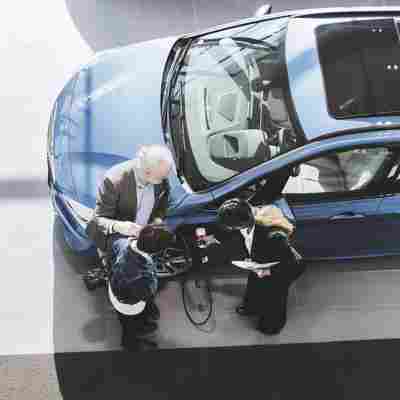
That the global EV market—including hybrid electric vehicles (HEVs), plug-in HEVs (PHEVs), and battery-electric vehicles (BEVs)—has continued to heat up in spite of the COVID-19 pandemic is no less than remarkable. Despite an overall slump in car sales worldwide, 2020 was a banner year for electric-vehicle sales, with global sales actually exceeding prepandemic levels by the third quarter of the year. Incredibly, Europe and China achieved fourth-quarter sales increases of 60 percent and 80 percent, respectively, over the previous quarter, helping to drive global EV penetration to an all-time high of 6 percent. While the United States lags behind the two other regions, EV sales increased nearly 200 percent between the second quarter 2020 and the second quarter 2021, contributing to a domestic penetration rate of 3.6 percent during the pandemic (Exhibit 1).
Exhibit 1 We strive to provide individuals with disabilities equal access to our website. If you would like information about this content we will be happy to work with you. Please email us at:
Taking a closer look at the geographic distribution of EV registrations, however, reveals that growth in EV adoption hasn’t occurred evenly in all regions; it is closely tied to population density and prevalence of large metropolitan areas and has differed considerably by state, with some states seeing a much larger number of EV registrations and higher penetration rates (Exhibit 2). One outlier remains the state of California, where light-duty electric-vehicle registrations shot up to 425,300 in 2020, representing about 42 percent of EV registrations in the entire country, according to the US Department of Energy’s Alternative Fuels Data Center. That’s more than seven times the rate of registrations for Florida, the state with the second-highest number of EVs registered.
Exhibit 2 We strive to provide individuals with disabilities equal access to our website. If you would like information about this content we will be happy to work with you. Please email us at:
Our research suggests that EV sales—propelled by more investments from the new administration (including President Biden’s goal that by 2030, half of all new vehicle sales in the United States will be zero-emissions cars), state-level adoption of credit programs, tougher emissions standards, and increasing electrification commitments from major US OEMs—will likely continue to increase. Billions of dollars in proposed infrastructure spending could result in a boost for EV sales through direct measures such as consumer tax credits for the purchase of EVs, as well as the construction of new public charging infrastructure. Congress is also considering proposals to raise the current tax credit for purchasing a new EV to $12,500, up from $7,500, in addition to making used EVs eligible for a smaller tax credit.
Furthermore, through the Bipartisan Infrastructure Framework, the government has pledged $1.2 trillion for transportation and infrastructure spending over eight years, to be initially funded with $550 billion. The deal, which is being taken up by the Senate, includes $15 billion to speed up adoption of EVs and accelerate America’s EV market. The plan sets aside $7.5 billion to construct a nationwide EV charging network and another $7.5 billion for low- and zero-emission buses and ferries to replace school buses that run on diesel fuel. Our analysis suggests that overall, new federal investments, an increasing number of states offering EV-related incentives and rebates, and tax credits favorable to EV owners will likely stimulate the adoption of electric vehicles in the United States.
More stringent emissions standards are also likely to play a role in the growing adoption of EVs in the United States. Several states along the East and West Coasts have adopted the standards put in place by the California Air Resources Board (CARB), with more states expected to join over the next five years. Currently, 13 states and the District of Columbia comply with CARB standards, which set fleet-wide fuel-economy-improvement targets. Of these, ten participate in zero-emissions vehicle (ZEV) credit programs, which award automakers for each ZEV sold.
We anticipate that, with respect to the US regulatory environment, states that follow the Safer Affordable Fuel-Efficient (SAFE) Vehicles Rule will likely return to the more stringent Corporate Average Fuel Economy (CAFE) standards by 2025. We expect four states to adopt CARB standards and roll out ZEV credit programs to support a long-term shift to sales of fully electric vehicles by 2025, and three states to completely phase out the sale of internal combustion engine (ICE) vehicles by 2035. In addition to some states taking legislative action to limit the sale of gasoline-powered vehicles, many large incumbent OEMs that comprise 57 percent of the current vehicle market have already announced ICE vehicle sales elimination dates that range from this decade to the year 2050.
Taken together, the favorable regulatory environment for EVs, increasing consumer interest in electric mobility, and production shifts to EVs planned by automotive OEMs will likely contribute to a rise in EV sales. In our most likely EV-adoption scenario, EV sales would make up about 53 percent of all passenger-car sales by 2030 (Exhibit 3). However, gas-powered vehicles will continue to be by far the most common car on the road through 2030.
Exhibit 3 We strive to provide individuals with disabilities equal access to our website. If you would like information about this content we will be happy to work with you. Please email us at:
The favorable regulatory environment for EVs, increasing consumer interest in electric mobility, and production shifts to EVs planned by automotive OEMs will likely contribute to a rise in EV sales.
Dealer profit pools to shift dramatically as EV sales increase
It seems clear that auto dealers will sell a greater number of EVs in coming years, which will have significant implications for their profits from both front-end business and back-end operations.
Impact on front-end sales
Given the high cost of battery packs, power electronics, and e-motors, along with a lack of economies of scale to drive down the cost of production, new EVs are more expensive to make than ICE vehicles. We expect that it will take until 2024 to 2026 to achieve cost parity as battery prices continue to decline.
In addition, consumers increasingly demand both transparency and consistency in pricing across various sales channels, whether through online direct sales or on the lot. With a proliferation of websites making comparison shopping as easy as a few clicks of a mouse, consumers want to know they are getting a good return on their investment. As a result, car dealerships are squeezed between the higher costs of EV manufacturing and the need to keep vehicles priced competitively. Consequently, average dealership sales margins for EVs are lower than for ICE vehicles. Moreover, a dealership’s power to influence sales margins may likely be further degraded by an OEM’s increasing power in two areas: pricing controls and online channels.
Dealerships have limited flexibility when setting prices for new vehicles. In addition, the traditional price model where the OEM provides the dealer flexibility to negotiate end prices with customers may be further limited in the coming years as electric vehicles gain momentum. Early indications of this are online sales models that prioritize transparency in pricing with consumers, OEMs linking incentives to the sale of vehicles that are set at the manufacturer’s suggested retail price (MSRP), and additional direct pricing models being adopted by Europe.
In addition, as a greater number of traditional OEMs make commitments to increase production of EVs, the desire to improve online sales channels or even to sell exclusively online has intensified. Some of the direct-to-consumer models still include the dealership (for example, purchase online, pick up at the dealership). However, in the United States, only about half of the states currently allow car manufacturers to sell autos directly to consumers online. Sixteen states currently prohibit direct sales of automobiles, including some of the most car-dependent states, such as those that have a higher percentage of residents living in rural areas. Twelve additional states make a sole exception for a US-based EV maker and clean energy company. Although EV “natives” have challenged states on existing legislation restricting direct-to-consumer vehicle sales, the outcome of those legal battles is far from clear. If more states begin to allow direct-to-consumer sales, auto dealerships could potentially see a negative impact on sales volume and dealer profit pools.
Finally, it remains to be seen how profitable used electric cars will be. While right now, due to concerns with long-term battery performance, EVs depreciate more quickly, in our view, EVs in the long run will likely depreciate in value more slowly than ICE vehicles and have longer life spans, which should improve their residual value. Since EVs can achieve a higher mileage over their lifetimes, the vehicles are monetizable over a longer period of time.
Impact on back-end services and parts
Finance and insurance. Regarding finance and insurance (F&I) offerings, the picture is mixed. Despite the rather dire picture for front-end gross margins on new EV sales, the back-end picture is more positive for auto dealerships. Many dealerships rely on finance reserves, or the portion of the buyer’s interest rate earned by the dealership for securing the car loan, as a source of revenue. EVs are typically $5,000 to $10,000 more expensive than comparable ICE vehicles. As a result, more buyers will likely need the help of the dealer’s finance department, which should result in more financing deals and lease volume for EVs. Furthermore, we expect the share of lease deals to increase until confidence in batteries goes up. In addition, for savvy dealers that partner with local installation services, there might be opportunities to offer financing contracts for car batteries and at-home charging equipment to consumers.
With a greater number of financing and leasing deals for EVs, the back office may also find that consumers are more willing to add on various F&I products, such as extended service contracts, since many early customers will likely be from more affluent segments. Guaranteed asset-protection insurance, which covers any difference between the value of the vehicle and its outstanding financing in the event of a total write-off, will be most appealing to consumers, along with personalized electronics and battery-maintenance plans.
However, according to our research, traditional vehicle service contracts that focus coverage on an abundance of mechanical components might not appeal to customers, since a nonhybrid EV requires less hardware than a comparable ICE vehicle. In addition, EV technology’s relatively ambiguous residual values remain a risk for dealers—they may vary considerably from brand to brand—and dealers must factor that risk into any pricing or discounting decisions made by the back office.
Service and parts. When we examined the impact of electrification on profits of aftermarket parts, we found that auto dealers will likely experience a decrease in aftersales parts revenue, since EVs tend to have fewer mechanical parts that break down. EVs will probably generate up to 40 percent less aftermarket spending when compared with similarly aged ICE vehicles (Exhibit 4). The biggest differences between EV and ICE aftermarket spend will likely emerge in general repairs, parts such as brake pads that tend to wear and tear, and consumables (for instance, fluids and traditional powertrain parts). However, other chassis components, EV powertrain parts, thermal parts, and tires will see a surge in spending in the long term due to the technical layout of EVs. While in 2030, ICE vehicles—at 63.9 percent—will make up the largest share of registered vehicles that are four to seven years old, EVs will catch up significantly, from a 3 percent share in 2020 to roughly 36 percent by 2030.
Exhibit 4 We strive to provide individuals with disabilities equal access to our website. If you would like information about this content we will be happy to work with you. Please email us at:
The impact of electrification on service revenue is less certain. Compared with ICE vehicles, EVs experience lower wear and tear per mile traveled, typically resulting in lower maintenance costs. One example is the EV’s regenerative braking system, which captures kinetic energy from a vehicle’s deceleration, converts it into electricity, and recharges the car’s battery, leading to more efficient braking and less brake wear.
However, even though EVs typically require less maintenance work than ICE vehicles, with less frequent service touchpoints, servicing EVs requires specialized capabilities, as the tasks involved are more complex. Because of this, each maintenance visit may necessitate more billable service hours and generate increased revenue per hour. And dealers might offer new service offerings. For example, an increasing penetration of advanced driver-assistance systems (ADAS) means that more vehicles may need to go through a typically lengthy and complex sensor-calibration process. Of course, getting the service business ready for EVs will also require investment, as we discuss in greater detail below.
Finally, over-the-air (OTA) update capabilities could further affect dealers’ aftersales revenues by reducing service traffic to the dealership. Most current service work, such as brake service, tire rotation, and suspension repair, require an in-person visit to the dealership. However, new cars—and especially EVs—contain an increasing share of software and electronics components. This will enable carmakers to offer more OTA services, such as wireless updates to the navigation and entertainment systems and software upgrades, removing the need for new car owners to visit the dealership in person for those improvements.
In summary, EVs could put a considerable strain on dealers’ aftermarket sales and profits. EVs contain fewer moving parts and require less maintenance work, which could, according to our analysis, significantly reduce aftersales parts revenue for EVs as compared with ICE vehicles over the next decade. At the same time, dealerships will need to meaningfully invest in preparing maintenance staff to work on EV powertrains, including specialized training and purchasing high-voltage tools and safety equipment.
Dealers’ front lines lack the expertise to adequately inform EV buyers
In addition to shifting profit pools, our data suggest another challenge for dealers: keeping up with the new sales processes and industry knowledge required to sell EVs. Many dealerships are woefully underprepared to meet the growing number of consumers considering an electric car. In a 2019 mystery shopping survey in the United States, China, and Germany, we assessed EV sales readiness along six key dimensions: in-store experience, test drives, the sales process, and expertise with regard to total cost of ownership (TCO), battery, and charging. Our analysis revealed significant gaps when it came to frontline sales reps’ ability to competently explain TCO differences between electric and ICE vehicles, in addition to a lack of knowledge about the battery (Exhibit 5).
Exhibit 5 We strive to provide individuals with disabilities equal access to our website. If you would like information about this content we will be happy to work with you. Please email us at:
Many dealerships are woefully underprepared to meet the growing number of consumers considering an electric car.
According to our research, a critical challenge for US sales representatives was properly articulating cost and benefit differences that go beyond government or OEM subsidies, such as environmental and technical benefits, and providing adequate information about lifetime value, maintenance schedules, and depreciation for EVs versus ICE vehicles. On the other hand, US auto dealerships did demonstrate high EV sales readiness when it came to product-portfolio availability and immediate test-drive options. With 90 percent of shoppers still visiting the dealership in person for test drives and to complete the purchase of a new car, a superior sales experience is critical.
How auto dealerships can electrify the business
Changing market dynamics and the continued growth of EV sales mean dealerships would be wise to act quickly to address all elements of the EV purchasing journey. In doing so, they can capture new opportunities.
Train the frontline and transform the sales journey. Dealers can continue to digitize the sales journey and offer a seamless, omnichannel experience that touches on not only the EV itself but also the broader ownership experience, such as charging and service. They can enhance the customer experience by including EV-specific elements within the showroom (for example, the fast-charging experience) and provide an end-to-end offering for customers that makes EV ownership as simple as possible (for instance, selling preferred installation services for at-home charging equipment).
Dealers can also continue to train sales associates or designate EV experts to become knowledgeable about important buying criteria such as range, vehicle performance, service expectations, and day-to-day operation. They might fine-tune each step of the decision journey to cover all aspects of EV ownership (for example, adapt the test drive to include charging the vehicle, in addition to vehicle performance). As the EV market continues to expand, a properly trained frontline sales staff can skillfully guide consumers to the right vehicle.
To capture growing customer demand, dealers could adjust vehicle inventory to include a greater number of new and used electric vehicles. To further optimize inventory, they might employ data and analytics to achieve the most competitive inventory at the trim level. For example, by tracking broader marketing inventory and trends, dealers can optimize their inventory to focus on high-demand and high-margin vehicles and trim levels. In addition, by offering comprehensive subscription models as an affordable entry into EVs—for instance, an extended test-drive phase or a short-term ownership solution such as a month-by-month lease—dealerships could reduce cost barriers to EV ownership.
Reshape F&I. Auto dealers could investigate new F&I products tailored to EV-specific maintenance needs (that is, extended warranties on the battery, emergency charging services included in roadside assistance, or tires-as-a-service with a monthly subscription to make the greater expense easier to pay) to lower the barrier to ownership and TCO. Moreover, dealerships should consider rethinking the residual values of ICE and BEV vehicles. As BEV adoption continues to grow and demand for them increases over time, low resale values could potentially erode the attractiveness of ICE vehicles in the future. We see additional opportunities to offer an end-to-end EV leasing or financing solution that includes everything from financing the vehicle, home charger installation with utility partnerships, and seamless commercial charging access, all in one monthly payment.
Reform your service concept. For service and reconditioning centers to service a growing number of EVs effectively, auto dealers will need to establish new point-of-sale processes, train technicians and other service personnel to manage high-voltage systems safely, and invest in the special tools and equipment needed to service electric powertrains. Consequently, auto dealerships will likely face a need for increased investments in EV aftersales readiness given the new tools, capabilities, and learning curve. Some OEMs have already adjusted their dealer contracts to reflect the shift toward electric-vehicle sales by setting dedicated targets requesting defined charging infrastructure and stipulating additional processes in areas such as battery maintenance and handling.
In addition, auto dealers might offer assistance to new, disruptive OEMs and digital dealerships. This would increase the utilization of assets for traditional dealerships while also lowering the barrier to entry for the new EV-focused OEMs and digital disruptor retailers that don’t own service networks. Dealers could also expand services not affected by electrification, such as tire sales and seasonal tire storage, and rethink how those services are offered—for instance, through the use of OTA status updates or at-home services—to continue to make servicing through the dealership attractive for customers.
Furthermore, dealers could consider partnering with manufacturers to invest in or subsidize EV-specific infrastructure or hardware, such as charging infrastructure for customers and the service shop, new tools and parts for service, or project coordination. Additionally, dealers might establish partnerships with local retail chains or energy providers to offer charging-infrastructure installation services for critical use cases, such as fleets owned by emergency responders. To drive more business to service bays, dealerships could also pursue EV certification.
Expand into fleet. Dealerships might rethink how they resell used vehicles, directing them, for example, toward rideshare workers or people interested in working in ridesharing. This would enable dealerships to reduce the cost of aging inventory while also attracting potential new buyers. Dealers might also offer fleet services for small- and medium-scale fleet owners, focusing on providing low-cost maintenance and repairs through trusted service networks.
Reassess your dealership strategy. Dealers could expand their used-car inventory to include off-brand EVs, to generate more traffic and become a trusted EV store across multiple brands and models. In addition, dealers may wish to redesign the contract model between OEMs and dealerships—for example, by allowing online orders to be fulfilled by dealers.
In this time of dramatic inventory shortages, many dealer groups are experiencing record profits. However, new digital disruptors are leading the shift to online and digitally enabled sales models and are quickly gaining market share. While the situation with reduced inventory could continue through 2022, the EV revolution is gaining speed, fueled by government action toward a greener economy, increasing consumer appetite for EVs, and a growing number of OEMs shifting their portfolios toward EVs. Our analysis leads us to believe that the emergence of more direct-to-customer, go-to-market models by OEMs, in addition to the differences in EV pricing and maintenance (resulting in slimmer sales margins and reduced aftersales parts revenue), will likely put traditional dealer profit pools under even more pressure in the coming years. To capitalize on new opportunities arising from shifting profit pools, dealerships will require innovative strategies.
EV Electric Vehicle Market Size to reach US$ 1108 Bn by 2030 with a 22.5% CAGR, EV Industry Analysis, Size, Share, Growth, Research, Trends and Forecast 2022 to 2030
New York, Oct. 31, 2022 (GLOBE NEWSWIRE) -- Beyond Market Insights has a recently published research report titled “Electric Vehicle Market by Vehicle Types (Passenger Cars, Commercial Vehicles), by End Use (Private, Commercial), by Components (Battery Cells and Packs, On-Board Charge, Motor, and Others), by Region and Key Players: Global Industry Size, Share, Growth, Trends, Analysis, Regional Outlook, and Forecast from 2022 to 2030” [178+ Pages Report] in its research database.

The report analyses the Electric Vehicle Market’s drivers and restraints, as well as the impact they have on demand throughout the projection period. In addition, the report examines global opportunities in the global Electric Vehicle Market.
Get the Free Sample Copy of the Electric Vehicle Market Report @
Electric Vehicle Market: Overview/ Growth Factors Electricity is used to power electric vehicles. These vehicles are propelled by an electric motor that runs on a continuous supply of energy from batteries rather than an internal combustion engine. Many different types of batteries are used in these cars. Among them are nickel-based designs using lithium-ion, zinc air, molten salt, and other materials. The primary reason for developing the electric vehicle was to replace more environmentally damaging traditional ways of transportation. Its popularity has increased as a result of numerous technological advancements. The supply of high-performance, fuel-efficient, and low-emission vehicles is rising, and there are stricter emission regulations as well as lower battery costs, and rising gas prices. All of these factors are helping to grow the electric vehicle industry. The increasing investments in the electric mobility arena are seen as a driving force in the expansion of the electric car market. However, the significant initial investment required to establish EV fast charging infrastructure, as well as a lack of adequate EV charging infrastructure, are projected to stymie industry growth. Furthermore, high car costs and insufficient standardization of EV charging stations are expected to be challenges for the electric vehicle market during the projection period.
Electric Vehicle Market Segmental Overview
On the basis of vehicle types, the market is segmented into commercial vehicles and passenger cars. The passenger cars segment is expected to dominate the global electric vehicle market over the forecast period due to rising demand and sales of passenger automobiles in Asia-Pacific, the passenger car category had a market share of more than. However, due to the presence of original equipment manufacturers and other automakers in the Asia-Pacific area, EVs are adopted there at a high rate. These elements will aid in promoting the expansion of this segment. Due to ongoing advancements in EV batteries that increase the load capacity of commercial vehicles, it is also predicted that the commercial vehicle market would grow in the upcoming years.
Request for customization of this research report @
Electric Vehicle Market Regional Overview
The Asia Pacific is expected to dominate the electric vehicle market over the forecast period due to the rising demand for passenger vehicles in developing countries. In terms of passenger cars and other vehicles, China makes up the largest portion. As their governments heavily invest in EV startups to encourage the production and sale of EVs around the world, other nations like Japan, Korea, and India are also opportunistic markets. Government subsidies to market participants from both developing and developed countries, along with strict regulations, are what is causing the electric car industry in the Asia-Pacific area to flourish. The growth of low-emission bus fleets is supported by subsidies and other incentives from China's Ministry of Transport, which has a positive impact on the market.
Buy this Premium Research Report @
The global Electric Vehicle market is segmented as follows:
Electric Vehicle Market by Components (Qualitative)
Battery Cells & Packs
On-Board Charge
Motor
Reducer
Fuel Stack
Power Control Unit
Battery Management System
Fuel Processor
Power Conditioner
Air Compressor
Humidifier
Electric Vehicle Market by Vehicle Types
Passenger Cars
Commercial Vehicles
Electric Vehicle Market by Vehicle Class
Low-priced
Mid-priced
Luxury
Electric Vehicle Market by Top Speed
<125 MPH
>125 MPH
Electric Vehicle Market by Vehicle Drive Type
Front Wheel Drive
Rear Wheel Drive
All Wheel Drive
Electric Vehicle Market by Charging Point Type
Normal Charging
Super Charging
Electric Vehicle Market by Vehicle Connectivity
V2B or V2H
V2G
V2V
V2X
Electric Vehicle Market by Propulsion
BEV - Battery Electric Vehicle
PHEV - Plug-in hybrid electric vehicles
FCEV - Fuel Cell Electric Vehicles
Electric Vehicle Market by End Use
Private
Commercial Fleets
Electric Vehicle Market by Region/Geography
North America - United States, Canada, Mexico
Europe- France, United Kingdom, Spain, Germany, Italy, Rest of Europe
Asia Pacific- China, Japan, India, Australia, South Korea, Rest of Asia Pacific
The Middle East & Africa- Saudi Arabia, UAE, Egypt, Kuwait, South Africa, Rest of the Middle East & Africa
Latin America- Brazil, Argentina, Rest of Latin America
Browse Complete Electric Vehicle Market Report Details with Table of Content and List of Table Click Here -
You can place an order or ask any questions, please feel free to contact at | +1 (310) 601-4227 (USA)
EV Electric Vehicle Market Report Scope Report Attribute Details Market size value in 2021 USD 178.5 billion Revenue forecast in 2030 USD 1108.8 billion Growth Rate CAGR of 22.5 % from 2022 to 2030 Base year for estimate 2021 Historical data 2017 - 2021 Forecast period 2022 - 2030 Quantitative units Revenue in USD billion and CAGR from 2022 to 2030 Report Coverage Revenue forecast, company ranking, Trends
competitive landscape, and growth factors Segments Covered Components, Vehicle Types, Vehicle Class, Speed, Vehicle Connectivity, Propulsion
Vehicle Drive Type, Charging Point Type, End-User, Applications, Region Regional scope North America; Europe; Asia Pacific; Latin America; Middle East & Africa Country scope U.S.; Canada; U.K.; Germany; China; India; Japan; Brazil; Mexico and Others Key companies profiled Tesla, Volkswagen AG, Saic motors, BYD, Stellantis, BMW Group, Nissan motors, Hyundai Group, Great wall motors, Toyota motor corp., GAC motors, Renault Group, and Others
Browse other latest Research Reports of Beyond Market Insights:
Big Data Market Size, Share, Growth Report-
Smart Lock Market Share, Size, Trend Analysis Report-
E-Learning Market Growth, Size, Share, and Forecast 2028-
Solar Photovoltaic (PV) Market Size, Share, Analysis, and Forecast-
Wearable Technology Market Development, Trends, Demand, and Outlook -
Cryptocurrency Market Trends, Size, Share, Research, and Forecast -
3D Printing Market Insights, Size, Share, and Outlook-
About Us
Beyond Market Insights is a top market research company delivering industry expertise and meticulous consulting services to customers for their business expansion. The reports and services delivered by Beyond Market Insights are used by respected educational institutions, start-ups, and companies globally to estimate and understand the changing international and regional business environments.
Our client's trust in our solutions and services has made us boundless every time the most useful. Our advanced research solutions have helped them in the right decision-making and direction for strategies to expand their business.
For Latest Update Follow Us:
Contact Us
Beyond Market Insights
30 N Gould St Ste R
Sheridan, WY 82801 USA
USA: +1 (310) 601-4227
Email:
Web:


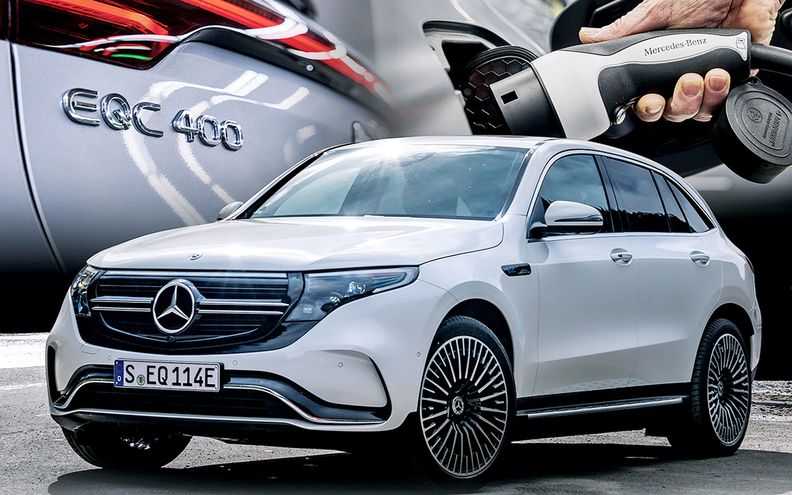
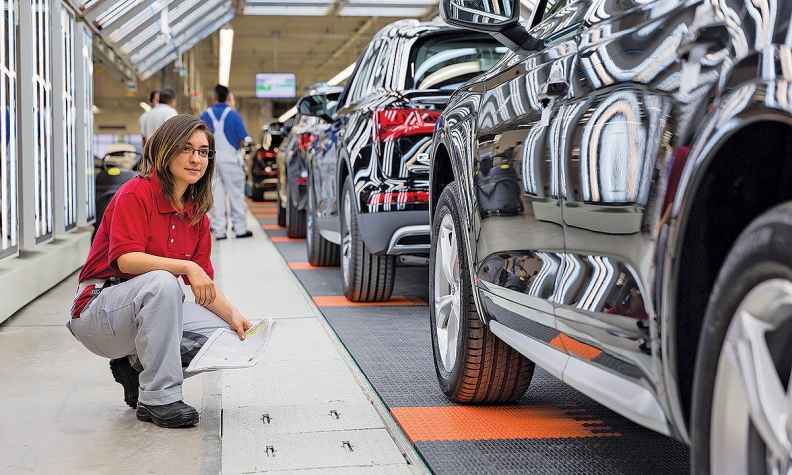

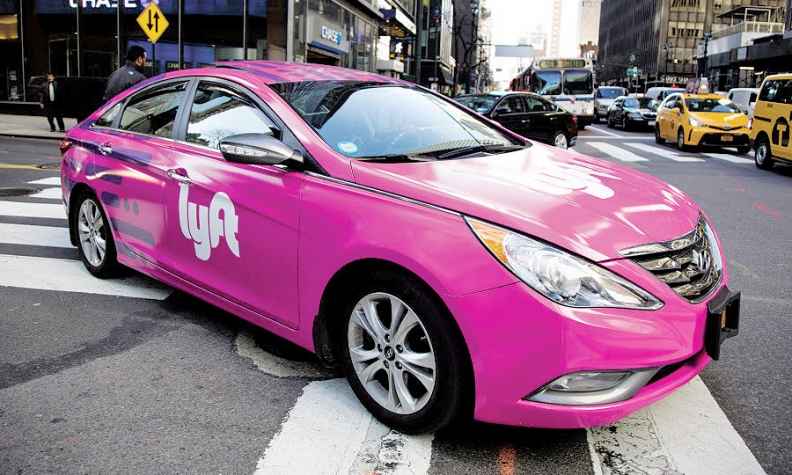
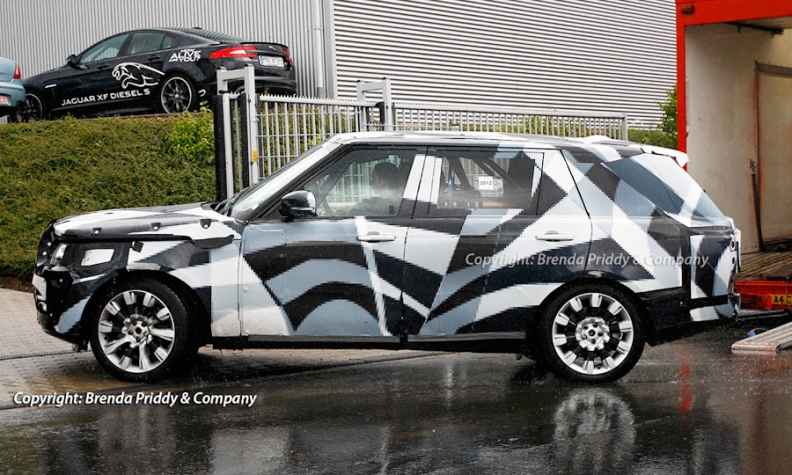
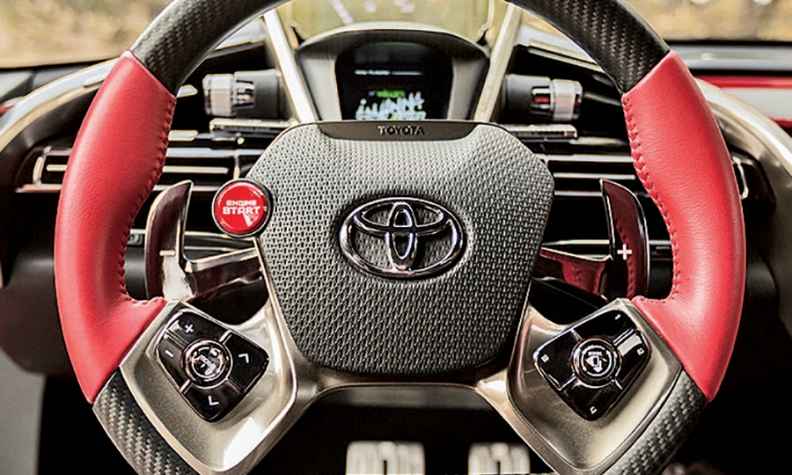
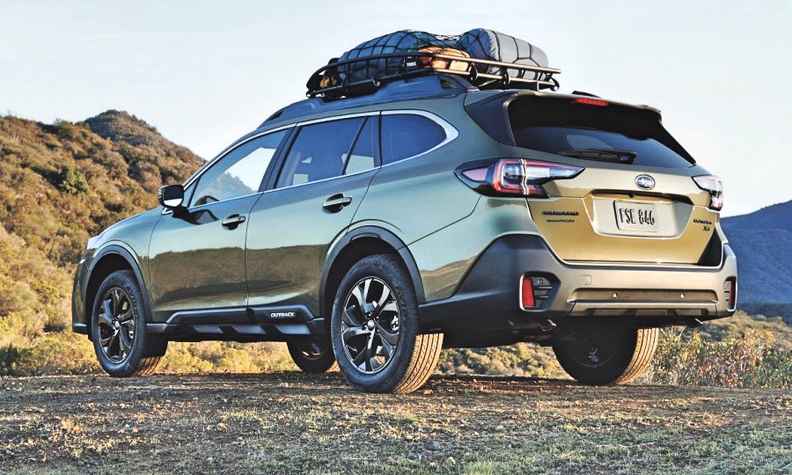
Post your comment